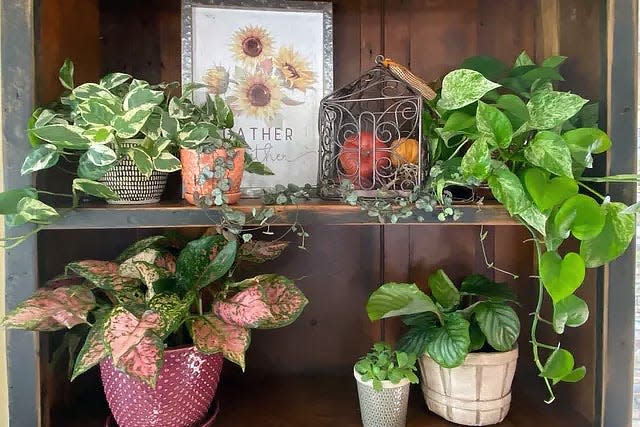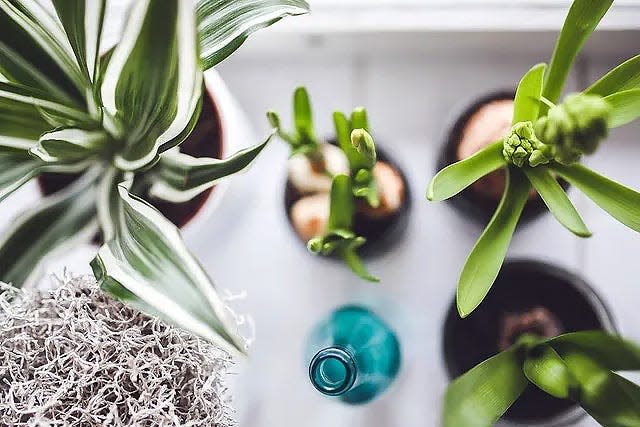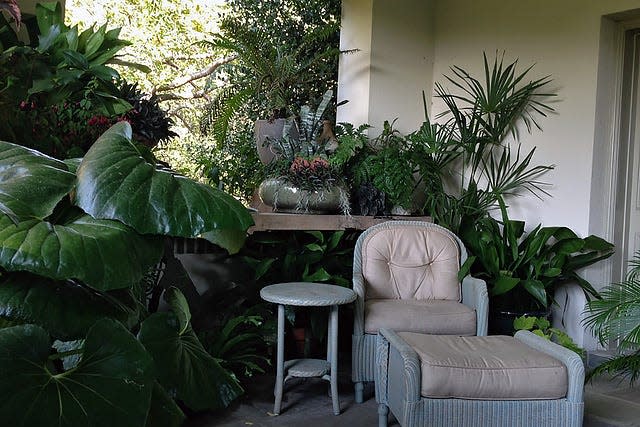5 tips for maintaining healthy houseplants during winter months
Houseplants brighten up the decor in any room, particularly in winter.As we enter the time of year when sunlight decreases and the green foliage outdoors has given way to bare branches on all but the most coniferous trees and shrubs, many gardeners turn their attention to indoor houseplants to get their foliage fix during the winter months.Houseplants spruce up the decor of any room in the house, add oxygen to the indoor environment, and can positively affect mental health. Caring for houseplants can also keep children engaged with gardening during the winter while teaching them the importance of caring for living things.But understanding the changing needs of houseplants during the winter months will be critical to keeping your plants thriving as the environment changes both indoors and outdoors.Increasing humidityHouseplants require special care throughout the year as outdoor environmental conditions change and affect the indoor environment. In winter, when outdoor temperatures cool


As we enter the time of year when sunlight decreases and the green foliage outdoors has given way to bare branches on all but the most coniferous trees and shrubs, many gardeners turn their attention to indoor houseplants to get their foliage fix during the winter months.
Houseplants spruce up the decor of any room in the house, add oxygen to the indoor environment, and can positively affect mental health. Caring for houseplants can also keep children engaged with gardening during the winter while teaching them the importance of caring for living things.
But understanding the changing needs of houseplants during the winter months will be critical to keeping your plants thriving as the environment changes both indoors and outdoors.
Increasing humidity
Houseplants require special care throughout the year as outdoor environmental conditions change and affect the indoor environment. In winter, when outdoor temperatures cool, the environment inside a home can become drier when furnaces and heaters are in use. A common sign of insufficient humidity for houseplants is the browning and withering of foliage.
More: 4 tips for gardening with physical limitations
Houseplants can be moved to the kitchen or bathroom in winter as these rooms tend to have higher levels of humidity. Alternatively, the foliage of plants can be misted with water. Be sure to mist both the top and bottom surfaces of the leaves early in the day so the foliage has a chance to dry before nighttime when temperatures tend to be cooler, in order to limit the development of foliar diseases.


You can also create a more humid environment for houseplants by grouping plants together and placing containers on a pebble tray with water. Simply line a tray or flat pan with pebbles and fill with water to just below the top of the pebbles. Make sure that the water level does not exceed top of the pebbles so that the potting mix in the containers does not become saturated.
Watering tips
The amount of water a houseplant will require depends on individual plant characteristics and the environmental conditions in the home. Larger plants and plants with larger leaves will need a greater amount of water and their soil moisture should be checked more often than small plants and plants with smaller or finer leaves. Other factors that affect the amount of water a houseplant will need to thrive include the location of the plant in the home relative to the amount of light, the relative humidity in the home, the stage of development of the plant and the size and type of container.


Check houseplants frequently to be sure that the potting mix is moist, but avoid keeping it too wet or dry. To check the moisture level of the potting mix, stick a finger into the soil up to the first knuckle in order to determine if the potting mix is moist below the surface. Battery-operated moisture meters can be used to more accurately assess soil moisture.
More: Gardening: What are air plants and how do they grow? We have the scoop
Only room temperature water should be used to water houseplants to avoid shock to the root system. Cold water can also damage the foliage of certain houseplants.
Monitoring room temperature
Most houseplants thrive in daytime temperatures of 70 to 78 degrees Fahrenheit with a night temperature that is 5 to 10 degrees cooler. Many houseplants are native to tropical environments including jade plant, birds nest fern, bird of paradise, rubber plant and others. These plants can be sensitive to cooler temperatures, so be sure to locate these and other houseplants away from drafty areas near outside doors and windows.


Avoid locating houseplants too close to heat vents, fireplaces and fans, as these locations tend to dry out the potting mix and desiccate the foliage.
Reducing fertilization
Houseplants need to be fertilized to ensure proper growth and development, especially during late spring and summer when warmer temperatures and increased light encourage growth. Fertilizer requirements for most houseplants are reduced during the winter months when growth rates tend to be lower. You can begin to apply fertilizer in spring as soon as the plant shows signs of increased or new growth.
Adding supplemental light
The amount of daylight will continue to decrease for about another month and then slowly increase until spring returns on March 19, 2024. This means that there will be less natural light available for houseplants. Most houseplants require 12 to 16 hours of light each day. Depending upon where houseplants are located in the home, and how often those locations are used and lighted, supplemental lighting may be needed. Houseplants that do not receive a lot of natural light, or are not used daily, such as basement rooms, may benefit from supplemental light provided by grow lights available for purchase in most garden centers or online.
Mike Hogan is Extension educator for Agriculture and Natural Resources and associate professor with Ohio State University Extension. [email protected]
This article originally appeared on The Columbus Dispatch: How to keep houseplants thriving in cooler months
What's Your Reaction?

















